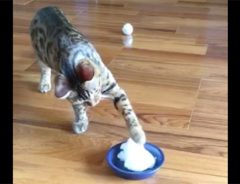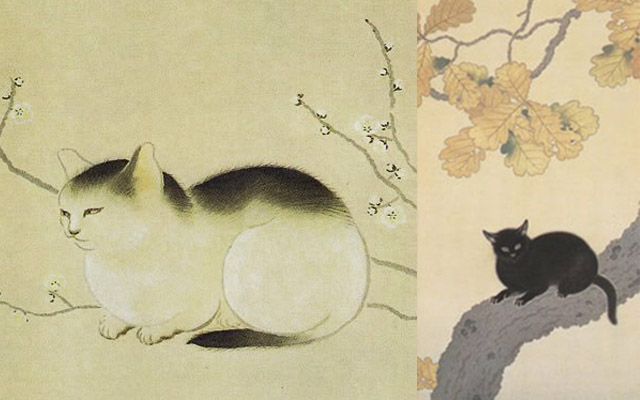- Source:
- wikipedia / tomosha / 生活の友社 / rock_et_nothing / 足立美術館 / 水野美術館 美術館便り / art-annual
- Tags:
- Cats / Japanese Art
Related Article
-

Cat Seeing Snow For The First Time Is The Peak Of Feline Curiosity
-

Kitten Enjoying Adorably Relaxing Shower Time
-

Cats’ transformation from cuddle buddies to epic warriors makes drawing impossible
-

This Japanese Store Carries Over 4,200 Pigments to Preserve Traditional Art Techniques
-

Japanese Illustrator’s Amazing Anthro-Animal Series Gives Them Fantastical Styles From Around The World
-

Adorable photo set of fluffy Japanese cat in plastic box proves that cats can take on liquid form



Japanese traditional painting is one of the oldest Japanese visual arts, and it comes with a wide variety of genres and styles, such as mountains, trees, flowers, and animals. Many highly known Japanese artists pick similar kinds of topics to present, which is similar to our “pop culture,” but in a more exotic and rich meaningful way.
However, Shunso Hishida refused to fill in the pop circle. It does not mean he does not enjoy it, he prefers to paint cats more than any mother nature or animals, even if it would not make him to be on the top-chart list of being recognizable, he still does so.
Despite Shunso wasn’t that popular during the Meji-period, he still received some supporting fans because of his new painting method, contemporaries as moro-tai (vague style). It uses a gradation of colors to replace the line drawings that characterized traditional Japanese-style painting, which is similar to our popular modern art drawing method of making “vanishing line (point).” It a unique technique that was strongly criticized by art critics, but could actually make the painting to feel more misty and glowing.
The Kuroki Neko (black cat) artwork is one of his masterpieces, currently residing in the Kumamoto Prefectural Art Museum.
Wikipedia
生活の友社
足立美術館
The outline of the cat is blended with colors, made the line looks seamless.
水野美術館 美術館便り
art-annual
After a few years, he realized his style reached its limits and could only provide a few good elements into his painting, so he broke the restriction further to make it more distinguishable. And the new form of art appeared and was symbolized as Nihonga genre, known as Japanese-style paintings, different from Japanese traditional paintings.
rock_et_nothing